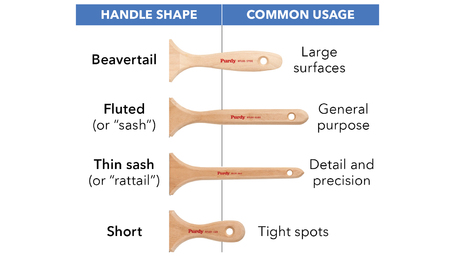How to Make a Sloped Grade Flat
I’ve got an interesting problem here at the ole homestead. How to set up a 12’x24′ prefab greenhouse in a temporary location without disturbing the natural slope of the grade too much. The greenhouse doesn’t really need to be plumb, but the base must be Planar, IOW, flat.
First a little discussion about the differences between level and flat, and, perpendicular and plumb. Webster’s 1913 dictionary says that perpendicular is “being at right angles to a given line or plane.” Plumb means being parallel to the force of gravity at any given place on the earth.
Flat just means being Planar. The top of a table is flat even when the table is sitting on its’ side. Level means being perpendicular to plumb. If a flat table top is perpendicular to a plumb bob hung over it, then it is flat and level.
Back to the greenhouse base. First I’ll set 8 batter boards to define the perimeter and set their elevations at an arbitrary 24″ above grade at each of their locations, and run the 4 string lines. I define the upper long side, (A,) and the lower short side, (B,) as temporary references. I then adjust the A end of the B stringline up or down until it just touches the A string. Then, I do the same thing for the A end of the D string, (upper short side,) and the D and B ends of the C string, (lower long side.) finally, I’ll go back and tweak the elevations of the C-D corner and the D-A corner.
This is what it now looks like.
Now I have the Perimeter rectangle strung, but I don’t yet know if it’s Planar because any pair of diagonal corner batter board sets could be high or low compared to the other pair. I’ll drive Stakes in the Lees of each corner batter board pair so that the strung lines will cross close to the perimeter corners. See illustration Diagonal Stakes and Strings below. I then pull stringlines diagonally across the area, setting their elevation to just touch the perimeter lines near the greenhouse corners. After I set the second end of each diagonal line, I have to go back and tweak the elevation of the first end.
Looking at where the diagonals cross, it turned out that the A-B and C-D corners were 1 1/8″ higher then the other two, so I’ll lower the C-D batter boards and stake 1 1/8″ and raise the B-D set 1 1/8″. Why both? Because moving the corner elevation only has 1/2 the effect at the center of the diagonals.First tweak the daigonal string elevations as needed to bring them into contact, then do the perimeter strings to take them to the diagonals.
Since the batter boards were kept level thru their changes in elevation, I can resquare the rectangle and check the grade to perimeter string elevations and decide what is the easiest way to excavate and fill to make the base a planar surface.
Edited 8/10/2007 1:08 pm by SamT
Edited 8/10/2007 1:46 pm by SamT






















Replies
After performing all the above, I think it would be easier to set the diagonals first as long as the ground elevations there wasn't too far from the elevations at the perimeter corners.
SamT
If you're not talking too steep a slope, I'd just drive four long stakes at the corners, use whatever (water level, transit, etc) to mark level lines on all of them, then measure up/down from the marks as needed to stay flat.
Might use the intersecting diagonals as a double-check, but only after the above.
That would give me level. I don't want level, I want flat.SamT
You didn't read what I said. Establish level, then measure down to where you want to be. The trick is to always do the same adjustment on two adjacent posts -- if you go down two inches on one, go down two inches on the other.
So convenient a thing it is to be a reasonable Creature, since it enables one to find or make a Reason for everything one has a mind to do. --Benjamin Franklin
Yeah I can see where that could work on a square or doubled square rectangle as long as the slope was parallel to one or the other sides or one of the diagonals.In my case, with an actual 11'8" by 24'8" rectangle, it would have taken a lot of math to determine where the actual slope ran and what drop per corner I should have. Especially since my slope was a naturally varying one along all four sides.After doing it the way I described above, I can see where it would have been a little faster to have started with the diagonal lines set at the arbitrary 24" elevation. Then I would have been able to set each side line to the proper elevation before seting the next line.Doing the sides first did allow me to see the lay of the lines under the strings on layout before I started adjusting corners and that might have made it easier to lessen the amount of grade work I have to do. I did not recognise just how deep and wide the swale that runs kinda down the middle of the greenhouse was until I had the side strings up. It starts near the uppermost corner and runs down to near the lowermost.SamT
It'll work on any rectangle -- no higher math required -- and it can slope any direction.
So convenient a thing it is to be a reasonable Creature, since it enables one to find or make a Reason for everything one has a mind to do. --Benjamin Franklin
OK.Let's see, first determine the average slope. Hmmmn, I guess I'll set four stakes and set a string at an arbitrary 24" above grade at each stake then eyeball the ground under the strings and adjust them to be parallel with the largest part the ground under them.Then, I'll go borrow, rent, or buy a level and. . . Nah, I've got lots of string left on this roll. . . I think I'll just run a couple of diagonals. Besides, as long as all the string lines touch at all five crossings, I know beyond a shadow of a doubt there are no critical errors.But wait, I am going to want to be able to transfer the string slope to the base after I set it for double checking, so I better move the stakes out past the perimeter of the base. Then I'll have to repeat the whole procedure. Maybe I'll just start with batter boards and adjust the string lines until they touch over the base corners because the batter boards elevations above grade won't match even with just a 6' spread. Actually I used stakes and braced them laterally, not batter boards.Shiite, bubba, I've spent twice as long explaining why I did it than it took to do it. After getting the lines strung, I had it Planar to 1/8" in less than ten minutes starting from an arbitrary 24" above ground at each stake.SamT
Whatever. I always have trouble getting the lines to even tension at such lengths, keeping them from getting tangled, keeping from tripping over them, etc.
So convenient a thing it is to be a reasonable Creature, since it enables one to find or make a Reason for everything one has a mind to do. --Benjamin Franklin
My excavator has a laser level that will "shoot grade", meaning he can dial in a certain percent slope and it projects it. You walk around with a grade rod find your elevations as usual, except they're not level... but they are PLANAR. They use it to cut ditches for drains with 2% slope, so that pipe can just be laid in the ditch (laser detector on the excavator bucket). You could rent and use the same thing to cut your pad.
Of course, you can do the same with a standard transit or "contractor's level". You just have to set it up off-level.
So convenient a thing it is to be a reasonable Creature, since it enables one to find or make a Reason for everything one has a mind to do. --Benjamin Franklin
My grade shooter cost $6.00 for the string and some scrap 2x's.
Edit: And I'm not pouring a pad, just setting PT 4x4's as a base.SamT
Edited 8/10/2007 11:29 pm by SamT
That sounds like a lot of work for something that's not plumb or level. Is the greenhouse prebuilt and going to sit like the leaning tower of piza?
Even if a client requested such a thing I'd pass since there are numerous practical reasons to build plumb and level.
If this is just a mental exercise on how to flatten a chunk of ground simply string two lines on opposite sides of your building. Now stand back from the middle of one side and sight across them like winding sticks. Any change will be extremely easy to see and you'll easily get within 1/8" of true flat within a few minutes. With small diameter line and good eyes there's no reason to not be within 1/16". With those two lines on the same plane simply connect the ends.
A second way that's just as fast is to simply string your diagnals with 80 lb. Spider Wire fishing line. The stuff is extremely light weight and over the distance of your building dimensions will sag almost nill with a good 30 -40 lbs of tension. When the intersection meets you're flat. Done. Don't try this with nylon or the tension in each line needs to be very consistant.
Good building
Beer was created so carpenters wouldn't rule the world.
This is a temporary PT 4x4 base for a prefab greenhouse for my DGF. Within the next two years it will be moved to a permanent foundation. The current location must be restored after the move.It will be a Pisa type building.SamT
Gotcha.
Beer was created so carpenters wouldn't rule the world.